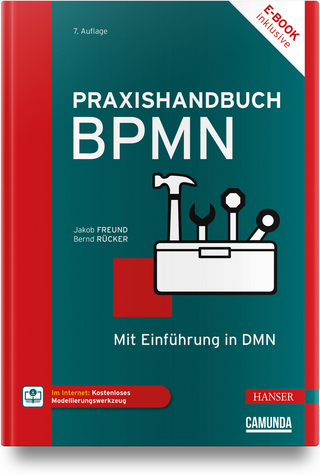
The Role of Statistics in Business and Industry
John Wiley & Sons Inc (Verlag)
9780471218746 (ISBN)
- Lieferbar (Termin unbekannt)
- Versandkostenfrei
- Auch auf Rechnung
- Artikel merken
An insightful guide to the use of statistics for solving key problems in modern-day business and industry This book has been awarded the Technometrics Ziegel Prize for the best book reviewed by the journal in 2010. Technometrics is a journal of statistics for the physical, chemical and engineering sciences, published jointly by the American Society for Quality and the American Statistical Association. Criteria for the award include that the book brings together in one volume a body of material previously only available in scattered research articles and having the potential to significantly improve practice in engineering and science.
Highlighting the relevance of statistical methods in everyday applications, The Role of Statistics in Business and Industry bridges the gap between the tools of statistics and their use in today's business world. This one-of-a-kind resource encourages the proactive use of statistics in three well-organized and succinct parts:
Setting the Stage provides an introduction to statistics, with a general overview of its uses in business and industry
Manufactured Product Applications explains how statistical techniques assist in designing, building, improving, and ensuring the reliability of a wide variety of manufactured products such as appliances, plastic materials, aircraft engines, and locomotives
Other Applications describe the role of statistics in pharmaceuticals, finance, and business services, as well as more specialized areas including the food, semiconductor, and communications industries
This book is truly unique in that it first describes case studies and key business problems, and then shows how statistics is used to address them, while most literature on the topic does the reverse. This approach provides a comprehensive understanding of common issues and the most effective methods for their treatment. Each chapter concludes with general questions that allow the reader to test their understanding of the presented statistical concepts as well as technical questions that raise more complex issues. An extensive FTP site provides additional material, including solutions to some of the applications.
With its accessible style and real-world examples, The Role of Statistics in Business and Industry is a valuable supplement for courses on applied statistics and statistical consulting at the upper-undergraduate and graduate levels. It is also an ideal resource for early-career statisticians and practitioners who would like to learn the value of applying statistics to their everyday work.
GERALD J. HAHN, PhD, was manager of applied statistics in the Corporate Research and Development Center at General Electric (GE) for twenty-eight years, where he was named a GE Coolidge Fellow, the organization's highest honor. Dr. Hahn is the coauthor of Statistical Models in Engineering and Statistical Intervals: A Guide for Practitioners, both published by Wiley. NECIP DOGANAKSOY, PhD, is a Statistician and Principal Technologist at General Electric's Global Research Center and is also Adjunct Professor in the School of Management at Union Graduate College. A Six Sigma Master Black Belt, Dr. Doganaksoy has written over fifty papers and journal articles on statistical applications in quality, reliability, and productivity improvement.
Major Applications. Preface.
Acknowledgments.
PART I. SETTING THE STAGE.
Chapter 1. Statistics: An Overview.
1.1 About this Chapter.
1.2 What is Statistics?
1.3 Areas of Application.
1.4 Statistical Literacy.
1.5 Better Decisions Require Better Data.
1.6 Statistical Thinking.
1.7 Related Disciplines.
1.8 Major Takeaways.
Discussion Questions.
Chapter 2. Statistics in Business and Industry.
2.1 About this Chapter.
2.2 Evolution of Statistics for Manufactured Product Applications.
2.3 Applications Beyond Manufactured Products.
2.4 Forces Impacting the Use of Statistics Today.
2.5 Major Takeaways.
Discussion Questions.
PART II. MANUFACTURED PRODUCT APPLICATIONS.
Chapter 3. Product Design: Concepts.
3.1 About this Chapter.
3.2 The Product Design Process.
3.3 Setting the Design Goals.
3.4 Ensuring Measurement Capability.
3.5 Design and Development.
3.6 Design Validation.
3.7 Transition to Manufacturing.
3.8 Major Takeaways.
Discussion Questions.
Chapter 4. Product Design: Example.
4.1 About this Chapter.
4.2 Thermoplastic Resin for Child Car Seat: Introduction.
4.3 Some Basic Elements of Plastic Part Design and Manufacture.
4.4 Setting the Design Goals.
4.5 Ensuring Measurement Capability.
4.6 Design and Development.
4.7 Design Validation.
4.8 Transition to Manufacturing.
4.9 Major Takeaways.
Discussion Questions.
Chapter 5. Product Reliability Assurance.
5.1 About this Chapter .
5.2 The Key Role of Reliability.
5.3 Design for Reliability: The Need.
5.4 The Process and the Participants.
5.5 Setting Reliability Goals.
5.6 Reliability Evaluation of a Conceptual Design.
5.7 Product Reliability Development.
5.8 Reliability Validation.
5.9 Product Safety.
5.10 Reliability Growth Analysis.
5.11 Product Burn-In.
5.12 Software Reliability.
5.13 Further Reading.
5.14 Major Takeaways.
Appendix: Product Life Distributions and Concepts.
Discussion Questions.
Chapter 6. Manufacturing Quality Improvement: Concepts.
6.1 About this Chapter.
6.2 The Need for Manufacturing Quality Improvement.
6.3 Different Industries.
6.4 Considerations in Manufacturing Quality Improvement.
6.5 Disciplined Approaches to Manufacturing Quality Improvement.
6.6 Quality Assessment and Improvement.
6.7 Statistical Monitoring.
6.8 Major Takeaways.
Discussion Questions.
Chapter 7. Manufacturing Quality Improvement: Example.
7.1 About this Chapter.
7.2 Generator Stator Bar Example.
7.3 Manufacturing Capability and Stability Assessment.
7.4 Addressing Measurement Error.
7.5 Reducing Deviations from Target and Variability.
7.6 Statistical Monitoring.
Discussion Questions.
Chapter 8. Product Manufacturing: Further Applications.
8.1 About this Chapter.
8.2 Integrating Engineering Process Control and Statistical Process Control.
8.3 Polymer Resin Example.
8.4 Materials and Parts Quality Assurance.
8.5 Final Product Assessment.
8.6 Productivity Improvement.
8.7 Major Takeaways.
Discussion Questions.
Chapter 9. Product Field Support.
9.1 About this Chapter.
9.2 Reliability Data Tracking.
9.3 Reliability Data Tracking for Nonrepairable Products.
9.4 Reliability Data Tracking for Repairable Products.
9.5 Planning the Failure Reporting System.
9.6 A Note on Product Safety .
9.7 Tracking Customer Satisfaction.
9.8 Competitive Evaluations and Advertising Claims.
9.9 Proactive Product Servicing.
9.10 Major Takeaways.
Discussion Questions.
PART III. OTHER APPLICATIONS.
Chapter 10. Pharmaceutical Products.
10.1 About this Chapter.
10.2 Drug Development: Process Overview.
10.3 The Role of a Pharmaceutical Statistician: An Overview.
10.4 Preclinical Studies.
10.5 Clinical Studies.
10.6 Case Study: Phase 2 Clinical Trial.
10.7 Regulatory Review.
10.8 Some Other Applications.
10.9 Some Statistical Tools Used in Pharmaceutical Applications.
10.10 Sources of Further Information.
10.11 Major Takeaways.
Discussion Questions.
Chapter 11. Financial Services.
11.1 About this Chapter .
11.2 Financial Services and Its Uncertainties: .
11.3 Credit Scoring for Consumer Loan Approval .
11.4 Credit Scoring Example .
11.5 Model Development and Implementation: Some Important Nitty-Gritties.
11.6 Modeling in Credit Management: A Broader Look.
11.7 Specific Application Areas.
11.8 Statisticians in Financial Services.
11.9 Further Reading.
11.10 Major Takeaways.
Discussion Questions.
Chapter 12. Business Processes.
12.1 About this Chapter.
12.2 Business Processes.
12.3 Example: Improving the Loan Decision Process for a Business Equipment Financing Company.
12.4 Steps for Process Improvement.
12.5 Another Example: Improving the Skip Tracing Process.
12.6 Some Further Concepts and Methods.
12.7 Operations Research and Management Science.
12.8 Major Takeaways.
Discussion Questions.
Chapter 13. Further Applications.
13.1 About this Chapter.
13.2 Food, Beverage and Related Industries.
13.3 Semiconductor Industry.
13.4 Communications Industry.
13.5 Statistical Image Analysis for Medical, Security and Other Applications.
13.6 Other Application Areas.
13.7 Emerging Areas: A Glance Into the Future.
13.8 Major Takeaway.
Discussion Questions.
References.
Index.
| Erscheint lt. Verlag | 15.8.2008 |
|---|---|
| Reihe/Serie | Wiley Series in Probability and Statistics |
| Zusatzinfo | Charts: 14 B&W, 0 Color; Photos: 6 B&W, 0 Color; Drawings: 28 B&W, 0 Color; Graphs: 43 B&W, 0 Color |
| Verlagsort | New York |
| Sprache | englisch |
| Maße | 156 x 236 mm |
| Gewicht | 517 g |
| Themenwelt | Mathematik / Informatik ► Mathematik ► Finanz- / Wirtschaftsmathematik |
| Mathematik / Informatik ► Mathematik ► Wahrscheinlichkeit / Kombinatorik | |
| ISBN-13 | 9780471218746 / 9780471218746 |
| Zustand | Neuware |
| Informationen gemäß Produktsicherheitsverordnung (GPSR) | |
| Haben Sie eine Frage zum Produkt? |
aus dem Bereich


